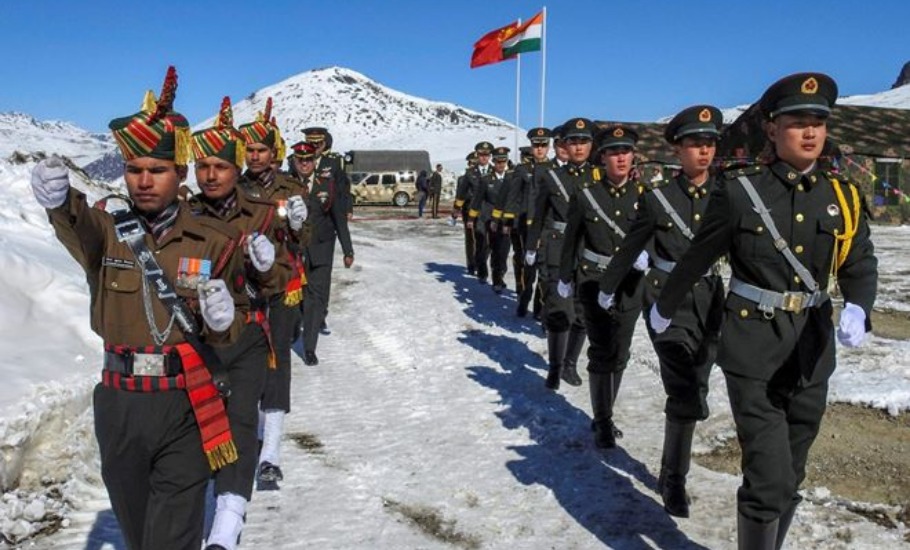
Not four, but 38 Chinese soldiers died in Galwan clash, claims report

A report compiled by a group of social media researchers has claimed that as many as 38 Chinese soldiers were killed in clashes with Indian troops in Galwan valley in June 2020, and not four that Beijing asserts.
Findings of the report titled ‘Galwan Decoded’, which were published in Australian daily, The Klaxon said that Chinese soldiers had “panicked into retreat” after their injured commander left the battlefield and two of their comrades were killed.
The researchers who have put together the paper over the span of a year, drawing inputs from first-hand stories from deleted Chinese social media accounts, have declined to be named on security grounds.
Also read: Army seeks help from PLA to locate, return missing youth Miram Taron
The report claims that Beijing not only hid a “lot of facts about what really happened, what led to the skirmish,” but also underplayed the number of casualties on its side.
“What was told by (China) to the world were mostly fabricated stories…Many blogs and pages have been culled by (Chinese authorities) but digital archives of mainland China reveal a different story,” it says.
The report claims that a bulk of the Chinese troops were washed away in the Galwan River in the intervening night of June 15-16.
Detailing the events on May 22 that preceded the deadly clash, the report said that Indian troops under the leadership of late Colonel Santosh Babu, commander of the 16th Regiment of Bihar, built a “temporary walkover bridge” over a stream of the Galwan River to enable Indian soldiers to monitor Chinese activities in the “buffer zone”.
It says the construction of the bridge had riled up the Chinese side, even though the People’s Liberation Army “was constructing its own infrastructure in the buffer zone”. On June 6, around 80 PLA soldiers came to break the bridge but were met with around 100 Indian soldiers who stood in defence.
“That is when the video of the standoff was probably shot, which Chinese media claimed to be shot on June 15, 2020,” the report said.
While both the sides agreed to withdraw all personnel from the buffer zone and dismantle all the facilities that crossed the Line of Actual Control, China “secretly dismantled the river crossing bridge constructed by the Indian army,” the report said.
On June 15, late Colonel Santosh Babu went to the disputed area to remove Chinese encroachment and was met by around 150 Chinese soldiers led by Colonel Qi Fabao.
The report says that instead of ironing out issues through discussions, Colonel Fabao ordered his troops to form a battle formation. He, however, was “besieged by the Indian army troops.”
“To rescue him, PLA battalion commander Chen Hongjun and soldier Chen Xiangrong entered the encirclement of Indian army and started (a) physical scuffle with Indian troops using steel pipes, sticks and stones to provide cover for (their) commander to escape,” the report said.
The report said that Colonel Fabao was hit in the head by an Indian soldier and sustained serious injuries. While Colonel Babu was killed in the clash, Hongjun and Xiangrong were “immediately silenced by the Indian army,” it added.
The report claimed that after Colonel Fabao’s exit from the battlefield and seeing the bodies of Major Hongjun, Junior Sergeant Xiao Siyan, who was recording the event, and Private Chen Xianrong, the Chinese soldiers “panicked into retreat”.
“The PLA soldiers didn’t even have time to wear water pants. They decided to cross the icy water of the river in pitch dark under the guidance of Wang…The river rose suddenly and injured comrades kept slipping (being) washed downstream,” the report said.
Also read: China changing rules of engagement with India on disputed border
Quoting several users of Chinese microblogging site Weibo, the report said that, “at least 38 PLA troops along with Wang (Zhuoran – a soldier who was helping his companions in retreating across the river into Chinese territory) were washed away and drowned that night…of which only Wang was declared among the four officially dead soldiers,” the report added.
China’s decision to appoint Colonel Fabao as among the 1,200 torchbearers at the Winter Olympics in Beijing has left New Delhi miffed with India putting a diplomatic ban on the event.


